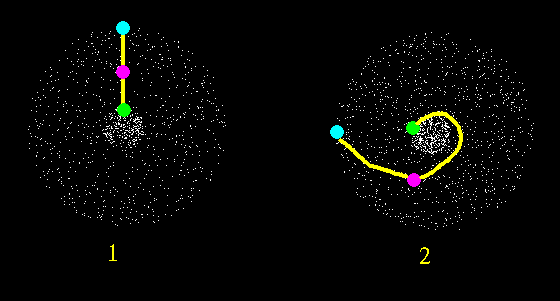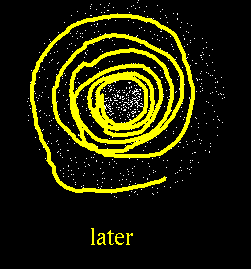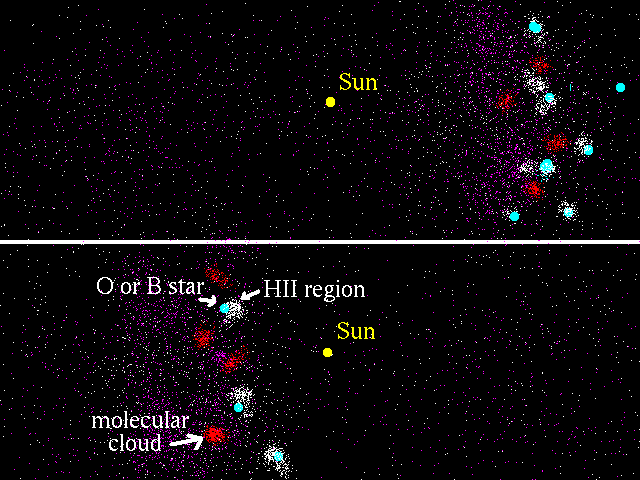 .
.What is going on?
Therefore any structure will be ``wound up'' into a spiral structure.
 .
.
Is this where the spiral structure comes from? It could produce short arm segments seen in some rather disorganized looking disk galaxies. But it can't account for big spiral arms that (presumably) stay stable for billions of years.
Why not? Recall that the Sun orbits the Galaxy in about 0.2 x 109
years. So we go from picture 1 to picture 2 in just 0.2 x 109
years. In just a few billion years, the spiral has gotten so wound
up that it has been obliterated.

There is some support for this idea from dynamical calculations, but this is a pretty difficult subject.
The compression would be pretty much invisible, except that the compressed gas makes formation of big bright stars more likely.
By the time the wave has passed through, the big bright stars have died.
 With this model, the spiral arms contain
With this model, the spiral arms contain
With H-alpha light, you can see HII regions. Here is M33, taken with a blue filter. This shows hot stars. Here is M33, taken with a H-alpha light
Studies looking at atomic hydrogen gas using 21 cm radiation from H atoms do see spiral structure.
Studies looking for molecular clouds using radio emission from CO molecules also see spiral structure.
However, this is a tricky business. There is no direct way to get the distance to a cloud that is emitting the radio waves that you detect. What astronomers do is to use the doppler shift of the spectral lines they are examining to tell how fast toward us or away from us the cloud is moving. If you know how fast things move as a function of the distance away from the center of the Galaxy, the velocity gives the distance. But you have to learn how fast things move as a function of the distance away from the center of the Galaxy from the same measurements. In my opinion, it's easier to learn about the structure of galaxies by looking at other galaxies.
Davison E. Soper, Institute of Theoretical Science, University of Oregon, Eugene OR 97403 USA soper@bovine.uoregon.edu